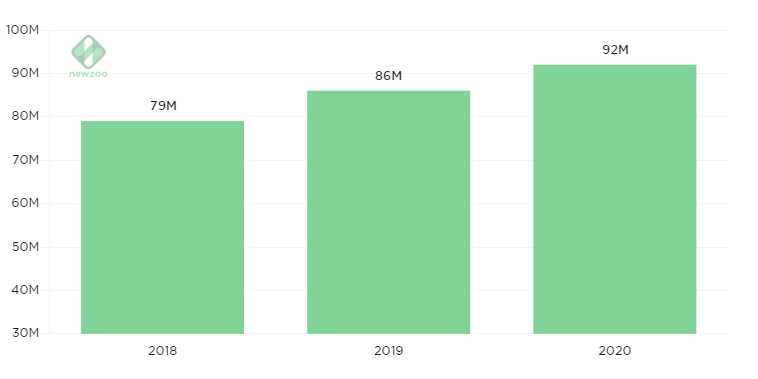If there’s one industry that thrived during the COVID-19 pandemic, it’s digital gaming. With millions of people bound to their homes, many turned to digital games to keep themselves entertained and engage with their friends and families virtually. But with lockdown restrictions easing down and businesses reopening, what trends in digital gaming should companies be aware of to sustain its growth momentum? We find out.
1. Digital content convergence
As video games, social media and streaming apps compete for user attention, digital cross-platform content convergence will become a mainstream reality.
Digital gaming and streaming apps
Users can already access Netflix on two of the three major current video games consoles. Likewise, Netflix is tapping into the gaming market with interactive shows, such as You Vs. Wild, and video game adaptations like The Witcher and Sonic the Hedgehog, and many more that are in the works.

Digital gaming and social media
The convergence of social media and digital gaming is not new. With digital gaming poised to become a $200+ billion market by 2022 and social media contributing to this growth as a key marketing channel, both virtual worlds will continue to mimic each other. This means that we will see more video games with social networking features, such as chat rooms, avatars and shared spaces — GamingBuddy, for example. On the other hand, social media companies will add innovative features to get more gaming enthusiasts to engage on their platforms. Facebook rolled out a cloud gaming app, Facebook Gaming, which includes casual games and lets users create and watch live gameplay.
2. Cloud gaming
The ability to consume content without having to purchase expensive equipment has always been an attractive proposition. That’s what Spotify did to music and Netflix to movies. A number of tech companies have been trying to apply the same premise to gaming for years. However, the absence of superfast internet connections has prevented game streaming or cloud gaming services from catching on. This could soon be a thing of the past as 5G becomes mainstream and tech giants continue to make inroads into cloud gaming.
Some early-stage products include Amazon Luna, which it launched in September 2020. Microsoft has started testing Xbox cloud gaming, called XCloud, for Xbox Game Pass Ultimate subscribers. Facebook Gaming, another cloud gaming service, has launched in beta with a range of mobile-native games in Android APK formats.
3. Surge in e-sports
Many people switched to e-sports as conventional sports competitions went on hold due to COVID-19. As networks look to fill hours of planned sports content that were cancelled, many e-sports tournaments have also been broadcast on live TV. The e-sports industry is currently valued close to USD 1.1B.
E-sports experienced a year-over-year growth rate of 11.7 percent by Feb 2020, as 272 million casual audiences and 223 million enthusiasts, and the overall audience size increased to 496 million. As per a Newzoo report, the annual growth rate of e-sports is estimated to be approximately 10.4% by 2023. The number of casual audiences has been predicted to grow above 351M, with almost 295M enthusiasts, making 646M the overall audience.
Growth of e-sports audience in Europe

While the largest e-sports markets in the world are North America, China and South Korea, the e-sports audience is expanding globally with the help of online streaming platforms. E-sports gamers use such platforms to live-broadcast their gameplays and coverage of events. This also allows gamers to engage with their fans.
According to a Streamlabs report, Twitch is favoured by the majority of streamers, accounting for 91.1% of the market share for viewing hours in Q3 2020, which saw a growth of 14.5% from Q2. The explanation for this substantial raise was because of the shutdown of the platform Mixer by Microsoft. Facebook Gaming, however, has also seen a rise in market share, from 1% to 3%, Q3 over Q2 2020.
According to Twitchtracker, COVID-19 lockdowns have prompted many individuals to maximize their time on Twitch. In the past year, 889B minutes of gaming tournaments have been viewed on the platform, an increase from the 660B minutes viewed in 2019. Likewise, Twitch has recorded 4.4M monthly streamers in 2020, compared to 3.64M in 2019.
A gradual growth in the number of channels on Twitch that air live concurrently has also been seen. In 2020, with 83,900 average concurrent live outlets, there has been a 69% growth over 2019. The surge of traffic on such platforms show that e-sports fans continue to be extremely interested and engaged with related content.
4. Mainstream use of Extended Reality (XR)
Extended reality (XR) technologies hold the edge when it comes to an immersive gaming experiences. Game developers are pushing the boundaries of what’s possible through cutting-edge graphics, gameplay and virtual reality (VR) or augmented reality (AR) or extended reality (XR) elements, with not only kits, but also on mobile devices. AR and VR technologies are likely to improve to deliver more realistic visual experiences by 2021. Without the need for a video display, video game companies will be able to make use of this technology to boost the overall gaming experience.

With this form of technology becoming mainstream in the gaming industry, several partnerships are also being formed between gaming and technology companies. Riot Games teamed with long-term partner Possible Productions and Lux Machina, who was also part of the team behind The Mandalorian, in order to help present a film-level XR viewing experience to their viewers in their e-sports event, the League of Legend World Championship 2020.
They have revealed that their use of XR is not only for the audience but also for players. This technology allows players to see more of what the watching crowd does at home, something that wouldn’t be possible for a conventional green screen. This encourages them, in a natural and stimulating manner, to observe the elements on stage.
On the other hand, Activision Blizzard has collaborated with Google to launch its multiplayer games on Google Cloud servers and to stream its e-sports leagues on YouTube. Google Cloud also provides AI software, along with the online gaming infrastructure, that Activision Blizzard could use to create a more customized environment for gamers.
5. Eased regulation in online gambling
With rapid technological developments and growing smartphone penetration, online gambling has become increasingly common.. This has contributed to a surge in betting for online casino players and e-sports. The US has experienced a spike in first-time online poker players by 255% since the COVID-19 lockdowns began. Overall, since April 2020, the poker industry has experienced a 43% growth.
Some nations have seen these increases as an incentive and have amended their regulations on online gambling. For instance, Belarus has legalized online gambling, and Armenia has made several changes to its current rules. With the global pandemic still not receding, the scale of the online gambling industry is projected to rise at a rate of 12.0% from USD 58.96B in 2019 to USD 92.86B in 2023. At a CAGR of 10.4%, the demand is projected to rise to USD 113.12B by 2025.

The biggest market for online gambling is in Europe and the UK. Today, gambling accounts for about 42.5% of the continent’s gambling revenues. Whereas online casinos and lotteries contribute towards 32.4% and 12.6% of the same. A study among 1068 gamblers in the UK found that 36% of gamblers bet on e-sports during the height of the pandemic. Meanwhile, 22% of non-esports bettors also agreed that they would consider placing a bet on e-sports in the future, as the pandemic rages on.
Online gambling companies are investing in building mobile platforms for their games with increasing applications and social gambling to improve accessibility and convenience for users. In 2020, 70% of overall gambling income was projected to come from mobile gambling, according to App Annie.
The availability at affordable rates of smartphones with high-end features such as expanded capacity, high-end graphics and higher processing speeds allows online gambling businesses to make mobile apps. Mobile gambling also provides valuable advantages, including more deposit opportunities, reward schemes, and the opportunity to compete with someone anywhere in the world.
Netscribes guides product roadmaps and enables successful marketing strategies for digital gaming companies by conducting extensive market research and analysis. Schedule a consultation today to understand how we’re helping gaming firms plan and prepare for opportunities on the horizon.






